Turning For Furniture Makers: Turn a carving mallet – Conslusion
David Douyard ditches the amateurs, and demonstrates one of his favorite practice projects, a carving mallet.In the conclusion of this series, David Douyard ditches the amateurs, and using all of the tools and techniques demonstrated in this series, makes one of his favorite practice projects, a carving mallet.
Note from Ben: Unfortunately, because of the need for microphones, we weren’t able to wear a face mask, but, as a friend recently pointed out, it’s a must when turning, especially for novices like Anissa and me.
Tell us what you think of this new format or what you think of this particular video series. Click here for a really quick survey.
For more turning on FineWoodworking.com:
- Turn a Carver’s Mallet by Michael Cullen #237–Tools & Shops 2014 Issue
- Learn to Love the Skew Chisel by Curtis Buchanan #257–Nov/Dec 2016 Issue
- The Language of Turning by Mike Mahoney #254–May/June 2016 Issue
Videos in the Series
-
Sharpening Turning ToolsApril 2, 2019
-
Turning for Furniture Makers: The Roughing GougeApril 9, 2019
-
Turning For Furniture Makers: Roughing from a riven blankApril 16, 2019
-
Turning For Furniture Makers: The Skew ChiselApril 23, 2019
-
Turning For Furniture Makers: V-Grooves and BeadsApril 30, 2019
-
Turning For Furniture Makers: Accurately Sizing Parts and TenonsMay 7, 2019
-
Turning For Furniture Makers: Turn a carving mallet – ConslusionMay 14, 2019
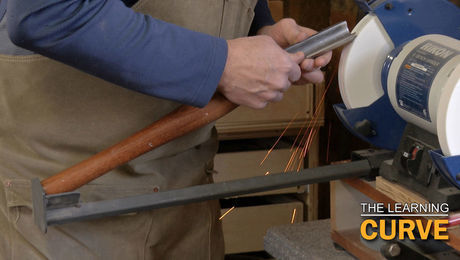

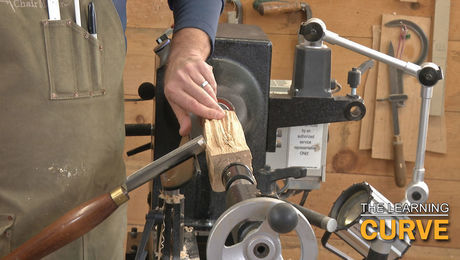

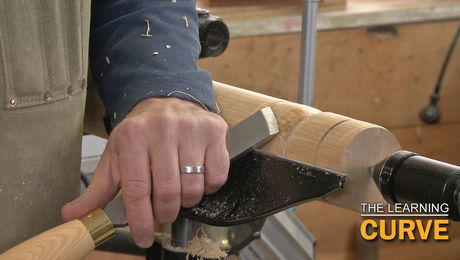
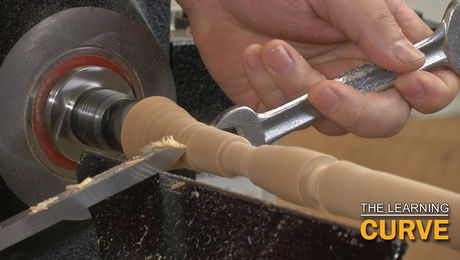
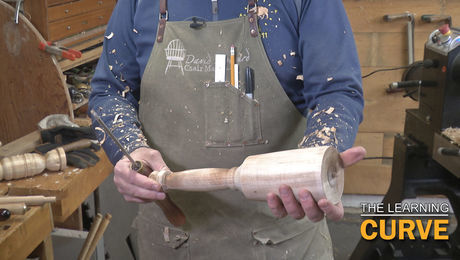













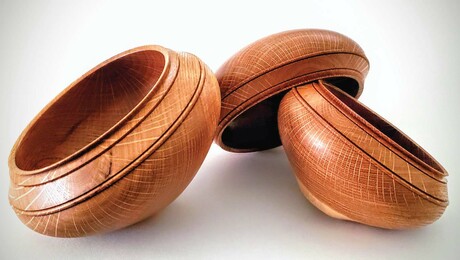








Comments
Ben, this was a very good series. I did, however, get a little nervous watching the two of you working at the lathe. Both of you seemed to be afraid of the lathe. While, like all tools, the lathe can be very dangerous it’s not as dangerous as some because the operator is holding the sharp cutter instead of it spinning at high speeds like it does on other machines. Yes, a face mask would have been appropriate. In the future you might want to workout a different microphone set up in order for you to demonstrated safe techniques. I wanted more. You left me wondering if either or both of you were able to master any of the techniques enough to make something. I agree that woodcarving mallets are a good place to start as are handles for things like ice cream scoops. When I started turning after about 30 years of not doing any turning I turned both mallets and ice cream scoop handles. For Christmas presents last year, after just a few stents at the lathe I was able to turn a dozen ice cream scoop handles from Bocote for presents.
Ben, thank you for what you’re doing in creating website content. You’ve taken the material to a higher level. I also appreciate that you want feedback and listen to what people say. You’ve become a great asset for the magazine.
Don Bullock
WB Fine Woodworking on YouTube, Instagram & Facebook
This is an excellent series! The kind of content that if delivered monthly would make the new membership really worth it, at least to beginner/intermediate hobbyists. Really a great concept to not just do “how to” but to share the journey of newbies. Ben, I could see this kind of concept working for craft like letter carving, simple relief carving, marquetry, even chair-making - keep’em coming!! For each: Tools/sharpening/prep,basic technique and practice, project to practice and build skill. David is a great teacher and this series has seriously moved a lathe up several notches on my future tool list. Ben and Anissa - thank you for being so willing to share your (in)experience the same way you do your expertise. Maybe it was in here somewhere and I didn’t catch it, what are exact sizes of the recommended three tools for beginner? Eg is it a 3/4 inch roughing gouge?
I’ve been butchering wood on the lathe for about 40 years plus and would never critique a master/guru, however I’ve only 2 golden rules that I’ve stood by and preach.
1. When using any form of calliper/sizing tool when lathe spinning, it should always be held in the right hand and chisel in left, never lean over headstock.
2. Clothing, I’ve never worn anything other than a short sleeve t-shirt or tight shearer’s top singlet and I’ve lived all my life in Tassie and Inland NSW.
Konrad Plachta
Down Under in Oz.
Log in or create an account to post a comment.
Sign up Log in